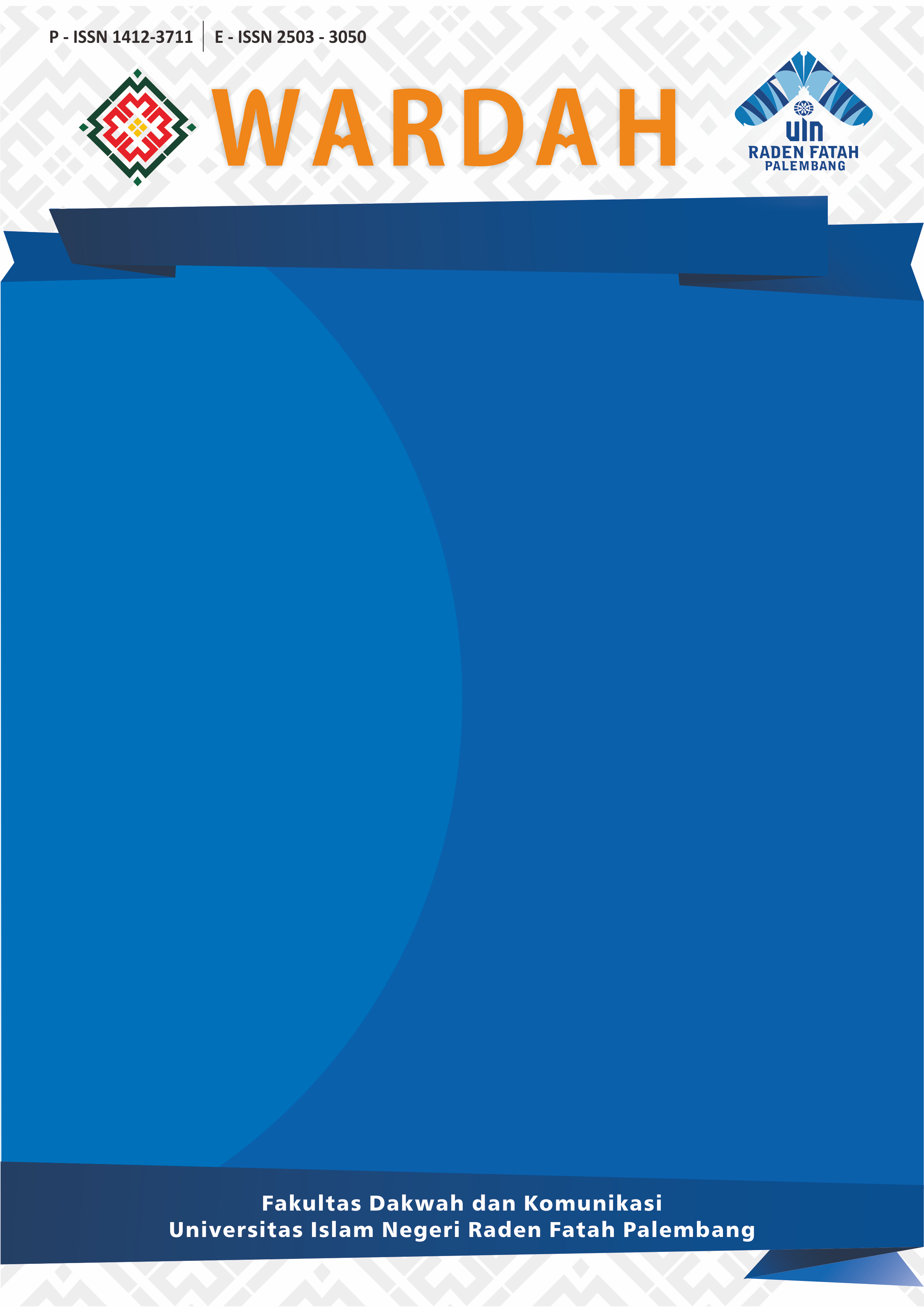Representation of Islamic Communication in Multicultural Spaces: A Semiotic Analysis of the Film 99 Cahaya di Langit Eropa
Main Article Content
Abstract
This study aims to analyze the representation of Islamic communication within multicultural spaces through the film 99 Cahaya di Langit Eropa. The focus is directed toward visual symbols such as mosques and the hijab, verbal signs in the form of dialogues about Qur’anic recitation and greetings of peace, as well as the narrative of the main character’s religious experiences that portray interactions between Muslims and European society. The method employed is qualitative with Roland Barthes’ semiotic approach, which interprets signs through three layers: denotation, connotation, and myth. Data were obtained through documentation by repeatedly viewing the film and supported by academic literature related to Islamic communication, the mediatization of religion, and semiotics. The findings reveal that the film represents Islamic communication in a persuasive, inclusive, and adaptive manner, functioning as a medium of intercultural and interreligious interaction. At the denotative level, Islamic symbols appear as religious identity, while at the connotative level, they affirm values of tolerance, harmony, and solidarity. At the mythic level, the film constructs an ideological narrative that Islam is a universal religion capable of engaging in dialogue with diversity. This study highlights the significant role of popular media in constructing discourses of Islamic communication within multicultural spaces.
Article Details

This work is licensed under a Creative Commons Attribution-ShareAlike 4.0 International License.
How to Cite
References
Alamyar, Iqbal Hussain, Mustain, and Ziaulrahman Mushkalamza. “From Hollywood to the Ummah: The Role of Islamic Broadcasting in Reshaping Perceptions of Islam in Response to Film Stereotypes.” Mediakita Volume 8, Nomor 2 (2024): 135–53.
Amer, Amena. “Between Recognition and Mis/Nonrecognition: Strategies of Negotiating and Performing Identities Among White Muslims in the United Kingdom.” Political Psychology Volume 41, Nomor 3 (2020): 533–48.
Belhaj, Abdessamad. “MUSLIM LOYALTY AND IDENTITY IN EUROPE: Discourse Analysis of ECFR Fatwas.” Miqot: Jurnal Ilmu-Ilmu Keislaman Volume 49, Nomor 1 (2025): 74–91.
Choirin, Muhammad, Sulton Fajarulloh, and Marlon Pontino Guleng. “The Da’wah Message in the Film ‘Tarung Sarung’: Faith, Worship, and Moral Behavior.” MUHARRIK: Jurnal Dakwah Dan Sosial Volume 6, Nomor 1 (2023): 189–207.
Choirizah, Adinda & Fakhrur Rozi. “ANALYSIS OF THE MESSAGE OF DA’WAH IN THE HATI SUHITA FILM WITH A ROLAND BARTHES SEMIOTIC APPROACH: PERSPECTIVES OF MORALITY, SHARIA, AND FAITH Adinda.” Jurnal CENDEKIA : Media Komunikasi Penelitian Dan Pengembangan Pendidikan Islam Volume 17, Nomor 1 (2025): 1–19.
Ding, Yidan, Yichen Xiao, Yumei Jiang, and Anhua Zhou. “The Mediatization of Religion : How Digital-Age Film and Television Reshape Interfaith Experiences.” Religions Volume 16, Nomor. 9 (2025): 1–24.
Ernawati, Arni. “The Struggle Between Romance and Faith: Study of the Da’Wah Message in the Movie ‘Ajari Aku Islam.’” Profetik: Jurnal Komunikasi Volume 15, Nomor 1 (2022): 121–35.
Fauzan, Muhammad Nuril. “Bridging Realities: Navigating Pop-Culture Media for Equitable Muslim Portrayals through the Prism of Moderation in Post-9/11.” Esensia. Jurnal Ilmu-Ilmu Ushuluddin Volume 25, Nomor 1 (2024): 84–98.
Fitria, Ninis, and Rio Febriannur Rachman. “Islamic Values In The Media (Critical Discourse Analysis Of The Film Hati Suhita).” Jurnal Spektrum Komunikasi Volume 12, Nomor 1 (2024): 66–75.
Hatam, Sara & Iman Muwafaq Muslim Muwafaq Al-Ghabra. “Barthes’ Semiotic Theory and Interpretation of Signs.” International Journal of Research in Social Sciences and Humanities Volume 11, Nomor 3 (2021): 470–82.
Hjarvard, Stig. “Mediatization and the Changing Authority of Religion.” Media, Culture & Society Volume 38, Nomor 1 (2016): 8–17.
Indainanto, Yofiendi Indah, Maulana Andinata Dalimunthe, Hasan Sazali, Rubino, and Syukur Kholil. “Islamic Communication in Voicing Religious Moderation as an Effort to Prevent Conflicts of Differences in Beliefs.” Pharos Journal of Theology Volume 104, Nomor 4 (2023): 1–13.
Junaidi, Musahadi & Akhmad Arif. “Becoming Europeanized Muslims: Religious Identity Formation among Millennials in the Indonesian Muslim Diaspora in the Netherlands.".” Journal of Muslims in Europe 1 Volume 3, Nomor 2 (2024): 193-214.
Knauss, Stefanie. “‘Religion and Film: Representation, Experience, Meaning.’” Brill Research Perspectives in Theology Volume 4, Nomor 1 (2020): 1–103.
Mowlana, Hamid. “Theoretical Perspectives on Islam and Communication.” China Media Research Volume 3, Nomor 4 (2007): 23–33. https://d1wqtxts1xzle7.cloudfront.net/32514562/theoretical_perspectives_on_islamic_co
Sakinah, Nur, Darma Darma, Sulaeman Sulaeman, Andi Fitriyani, Nurida Kella, and Baiti Ren’el. “Muslim Community Communication through Cross-Religious Social Interaction in the Mardika Market Ambon, Moluccas.” Jurnal Ilmu Dakwah Volume 44, Nomor 1 (2024): 53–68.

